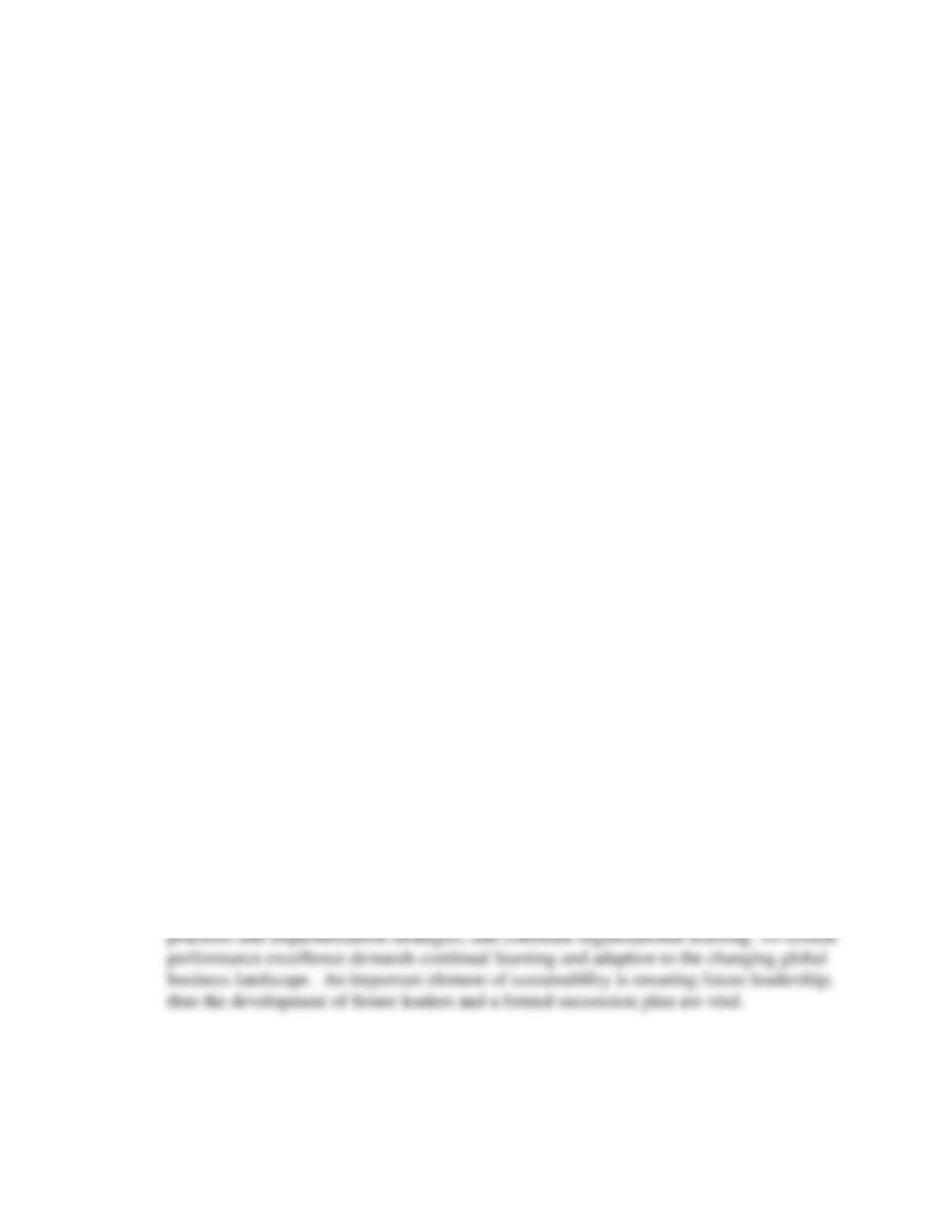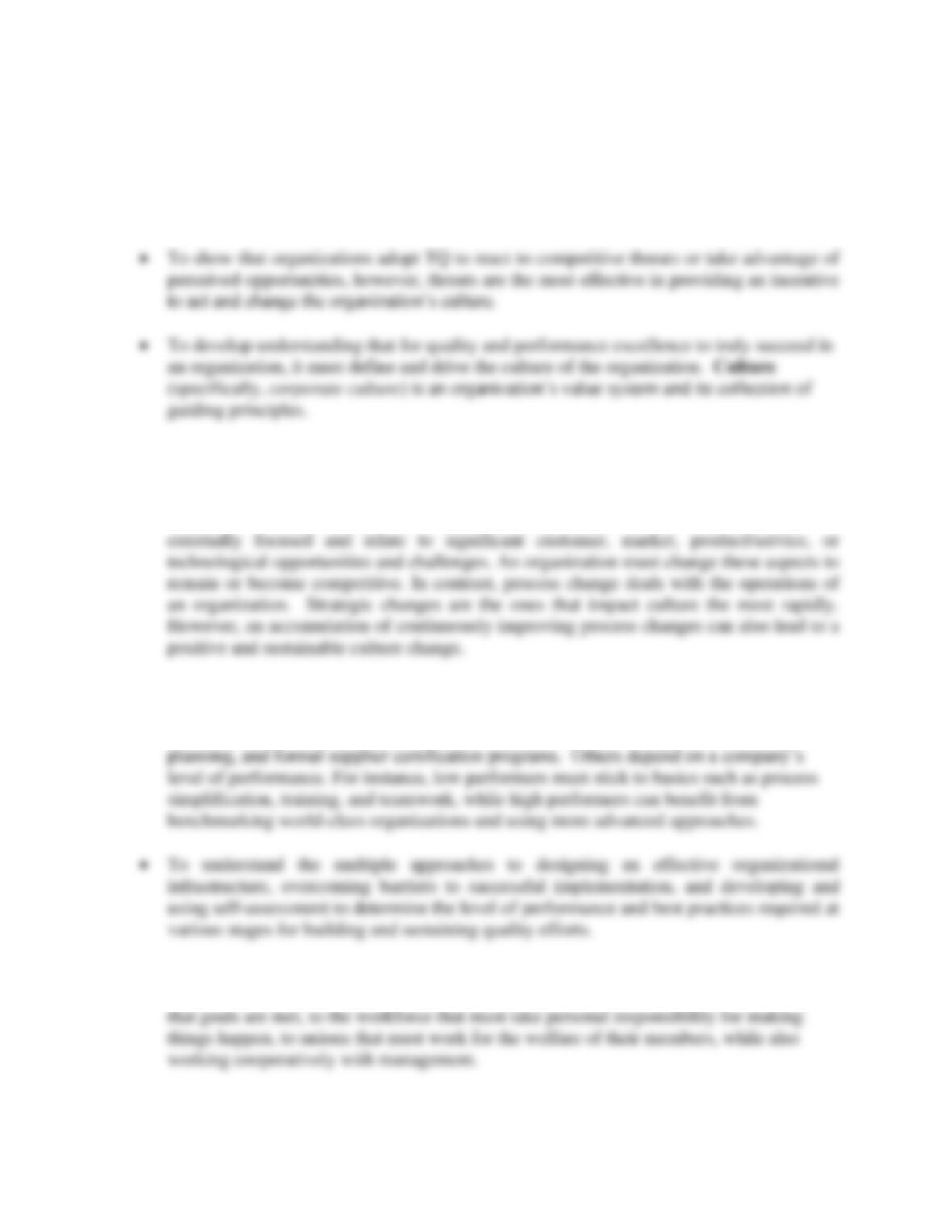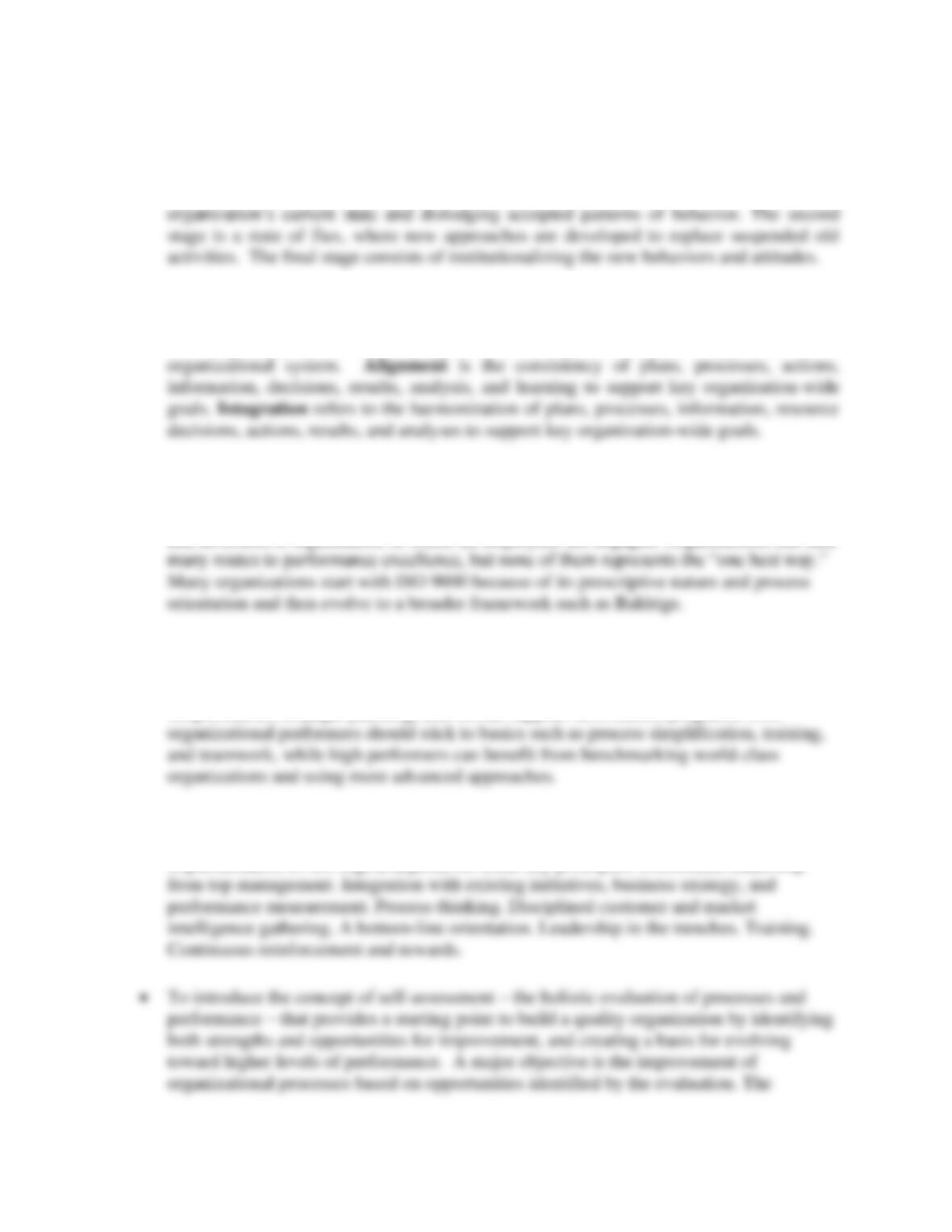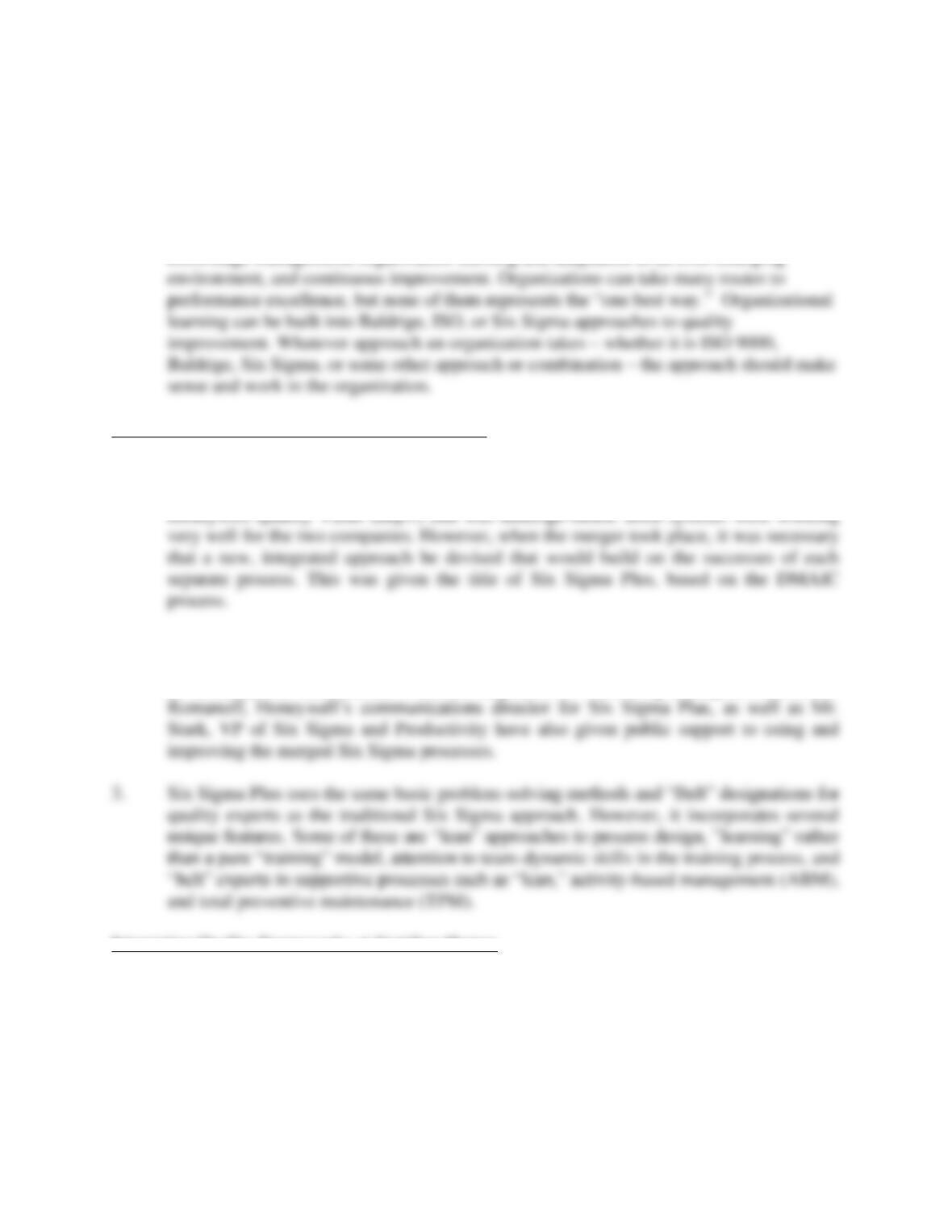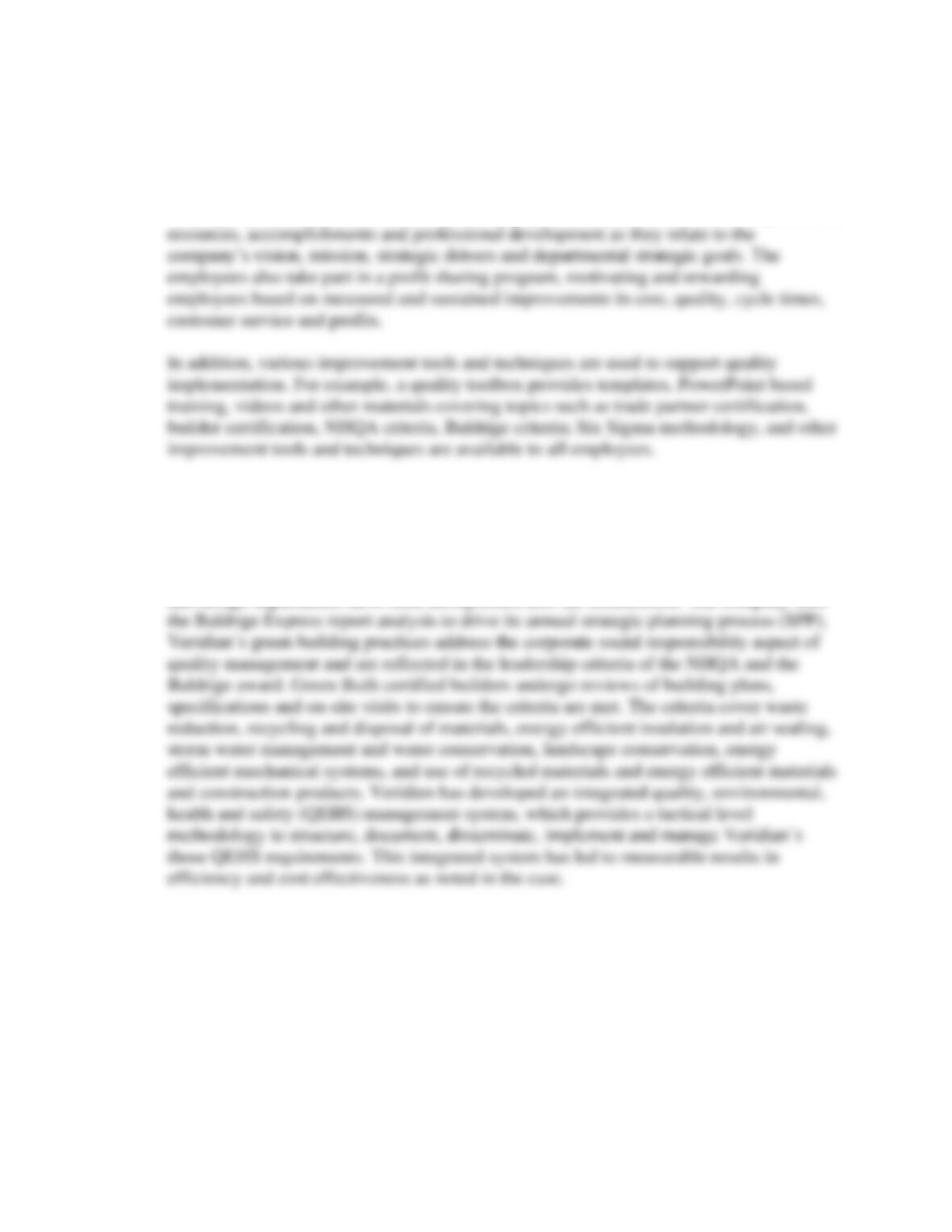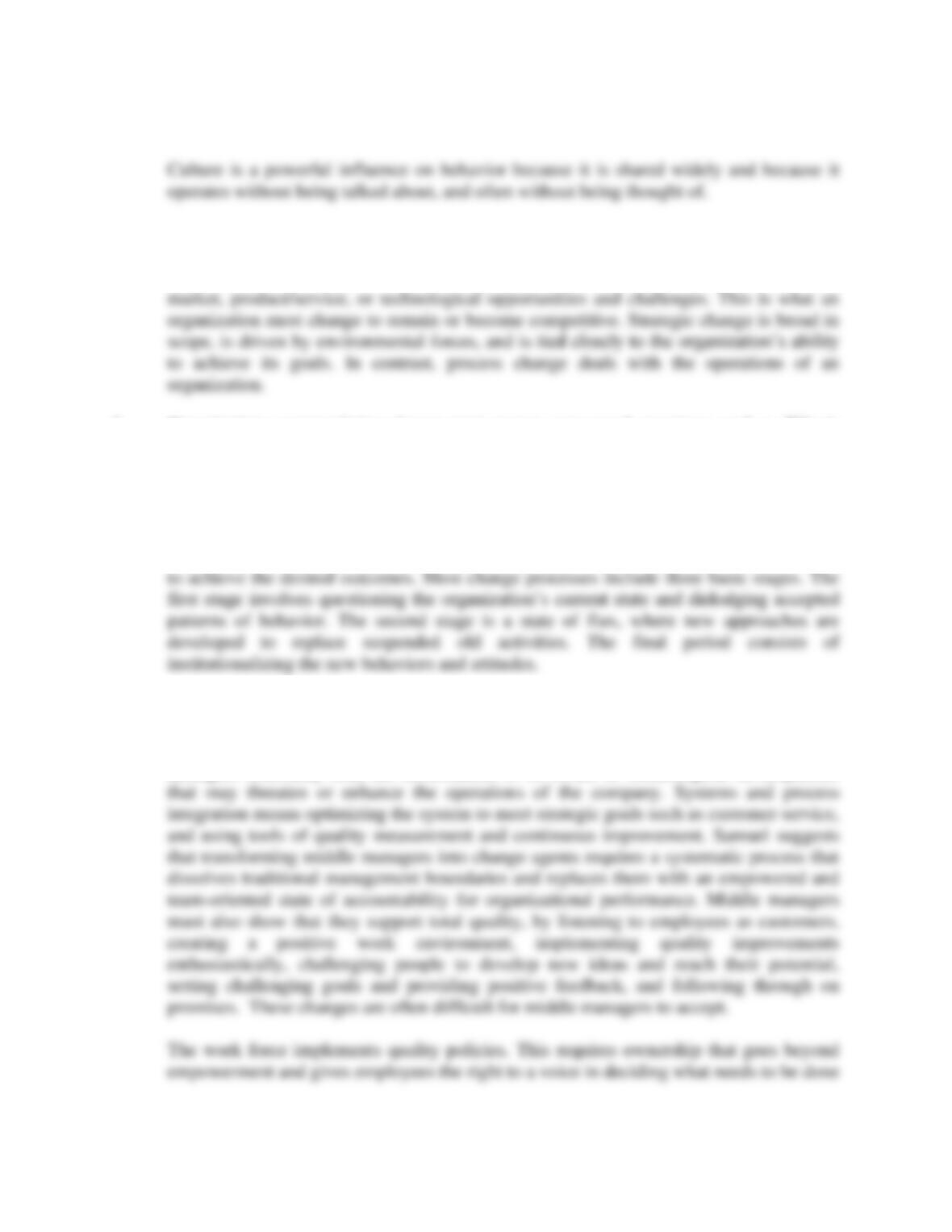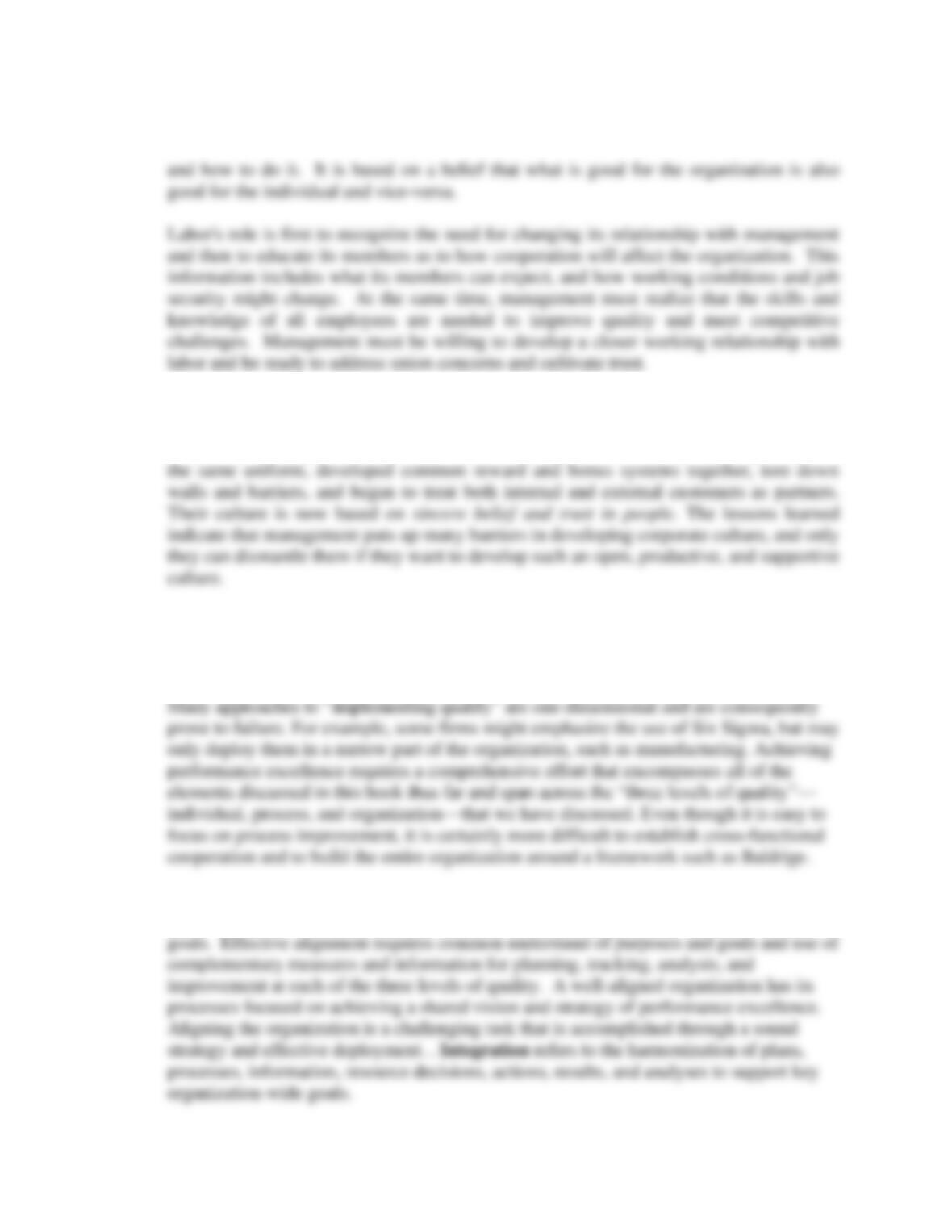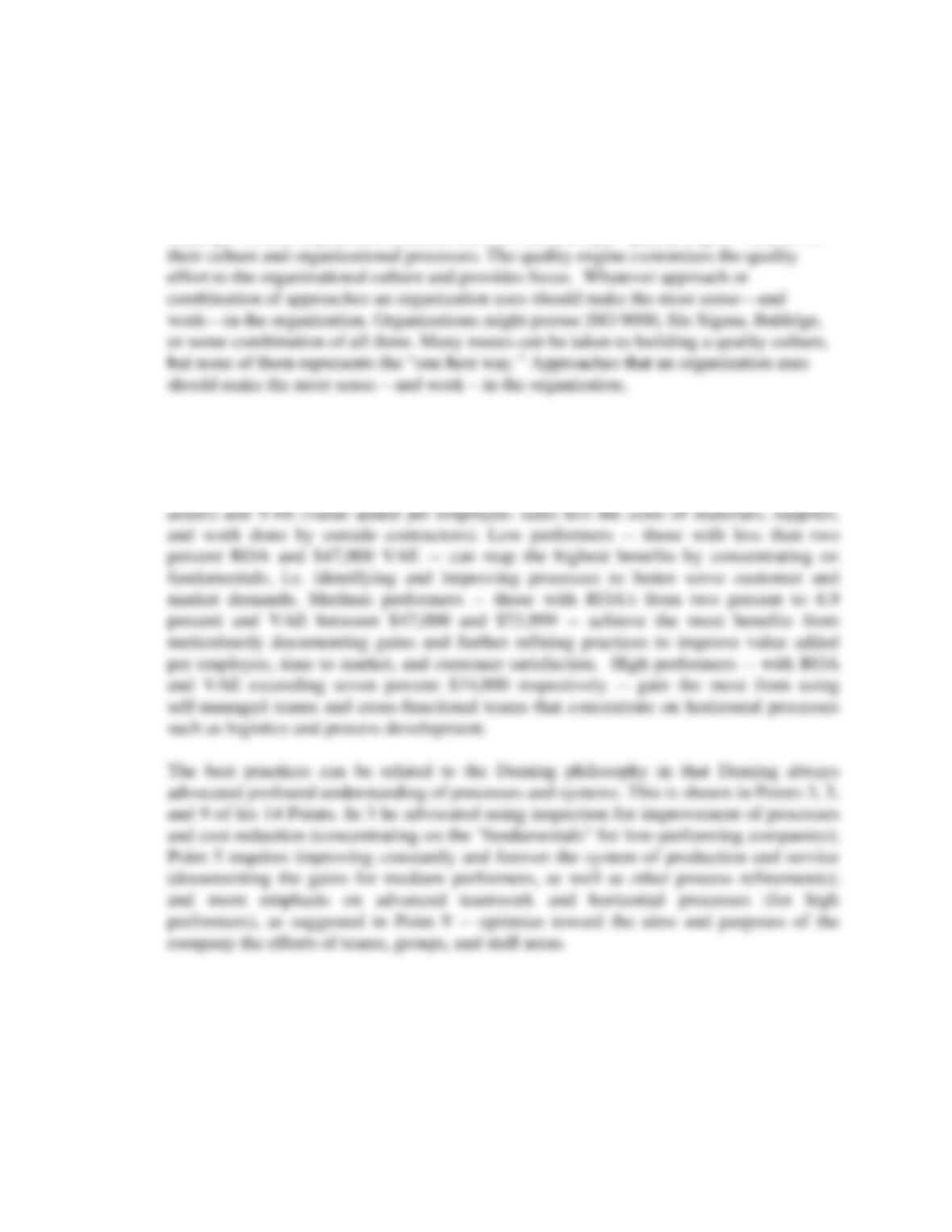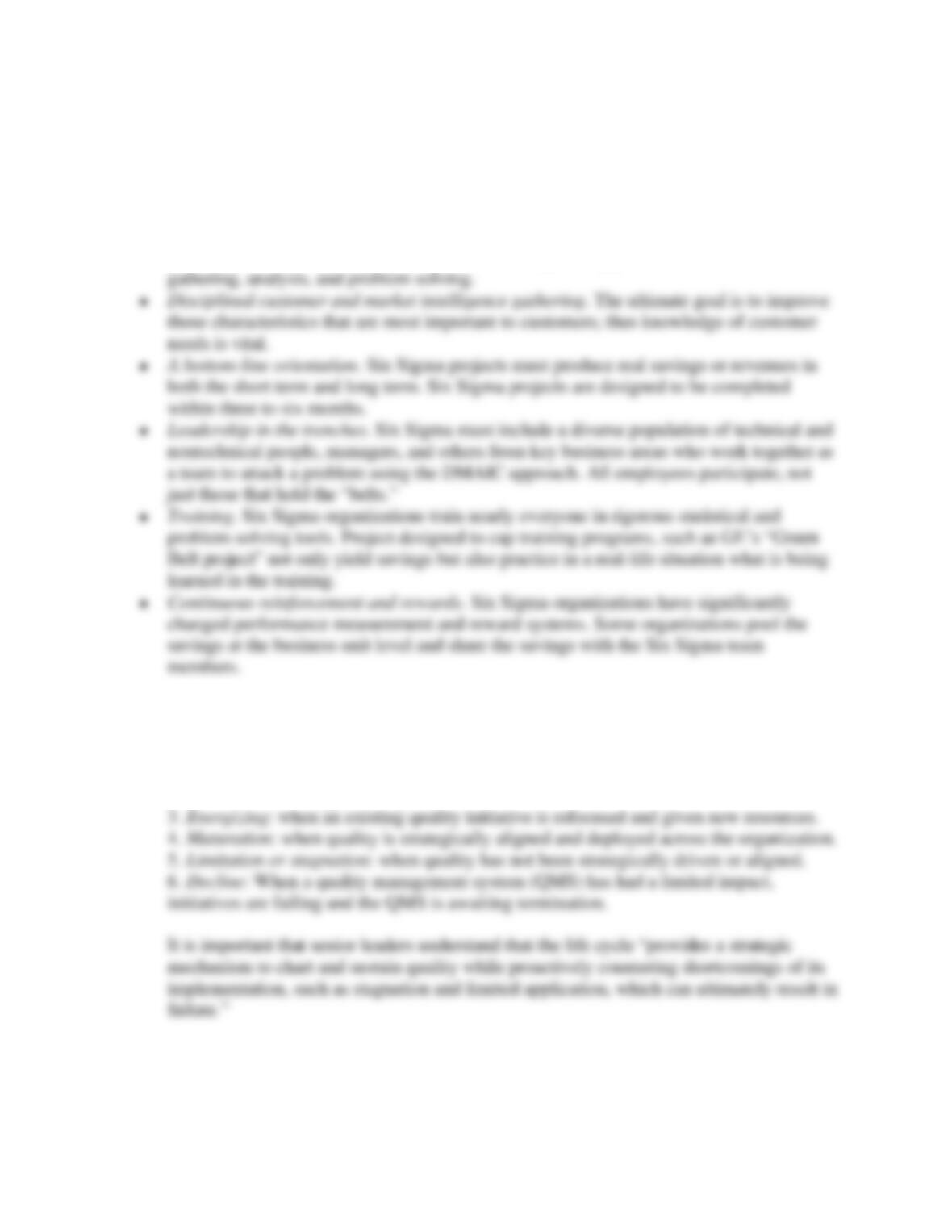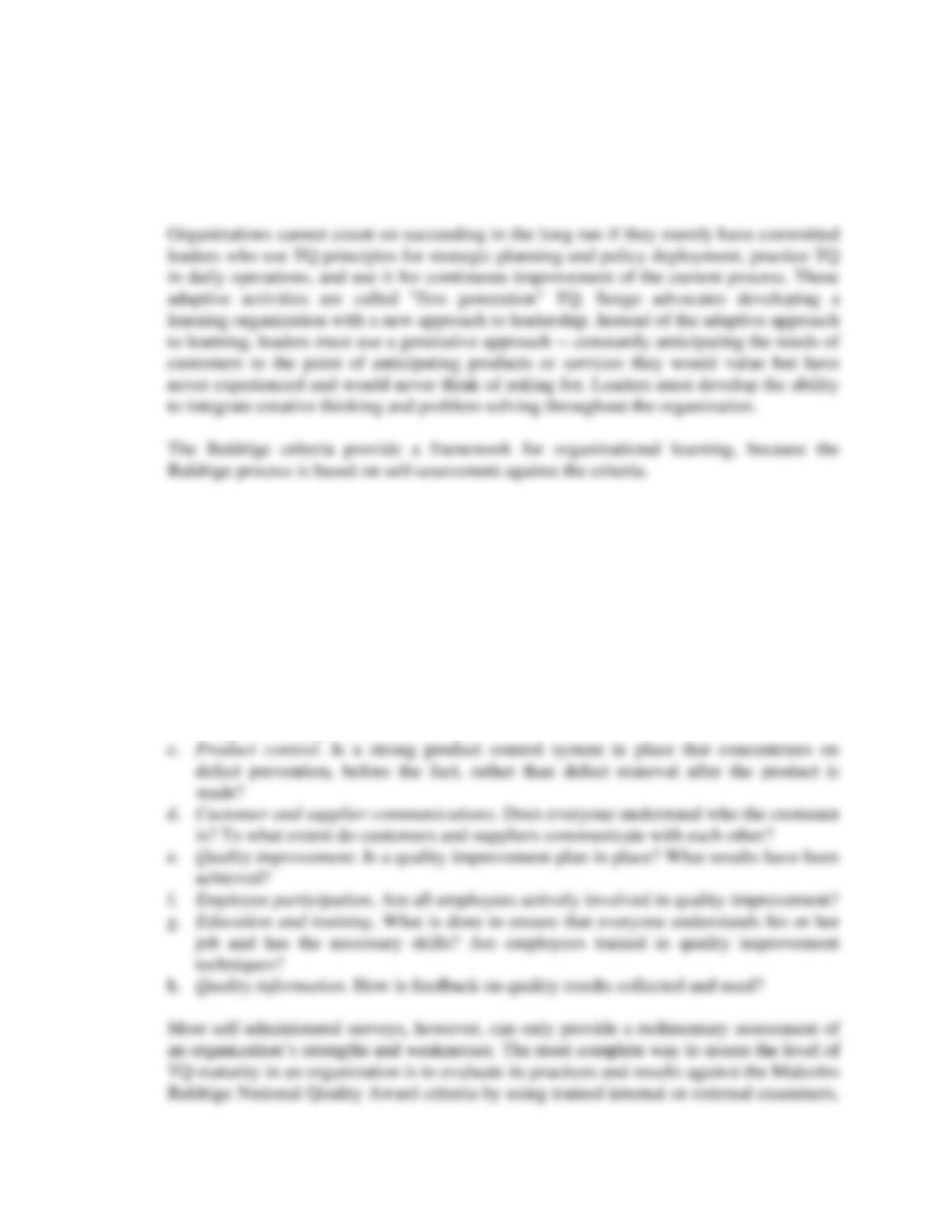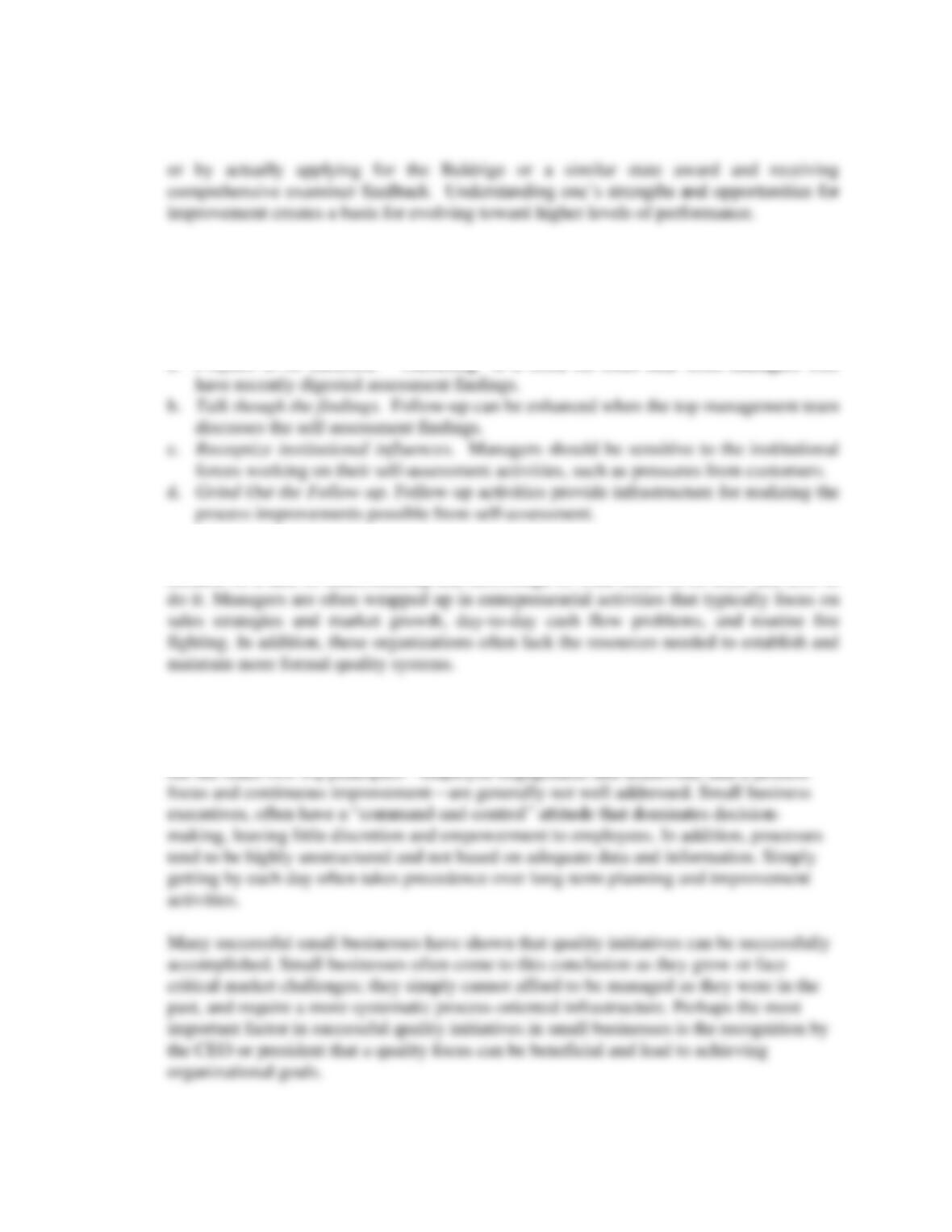1
CHAPTER 14
Building, and Sustaining Quality and Performance
Excellence
Teaching Notes
The keys to attaining an in-depth understanding of total quality organizations as integrated
systems are to have basic knowledge of organizing principles and organizational cultures and to
develop and use a sustainable model for performance excellence such as the Baldrige criteria as a
foundation for quality organization and continuous improvement. Building and sustaining a TQ
organization requires leadership as the "driver" for performance excellence, a readiness for
change, the adoption of sound practices and implementation strategies, and effective
organization. An understanding of basic integrative concepts and their importance is vital for
managers and workers at every level in an organization which is focused on performance
excellence. Integrated systems have become more important in organizations that aspire to high
quality levels, and organizational leaders must understand how to "deploy" plans and quality
efforts throughout the organization.
This chapter focuses on the corporate culture, and integration of concepts developed throughout
the text. This organizing focus is one that students may find easier to grasp than the cost of
quality or even planning for quality. However, you should point out that the "safe" concept of
organizations is rapidly changing, as organizations and individuals are shaken out of their
complacency by events that surround them today. The strict hierarchy of the conventional
organizational "pyramid" is giving way to a "matrix" or “process” focused organization, self-
managed teams, massive part-time employment, and economic and technological dislocations.
Numerous attempts to align the corporate culture with the total quality management, global
marketplace, and "lean and mean" concepts, not all of which have been resounding successes,
have brought us into the 21st Century. Key objectives are:
• To emphasize that building and sustaining performance excellence requires effective
leadership, a commitment to change and long-term sustainability, the adoption of sound
